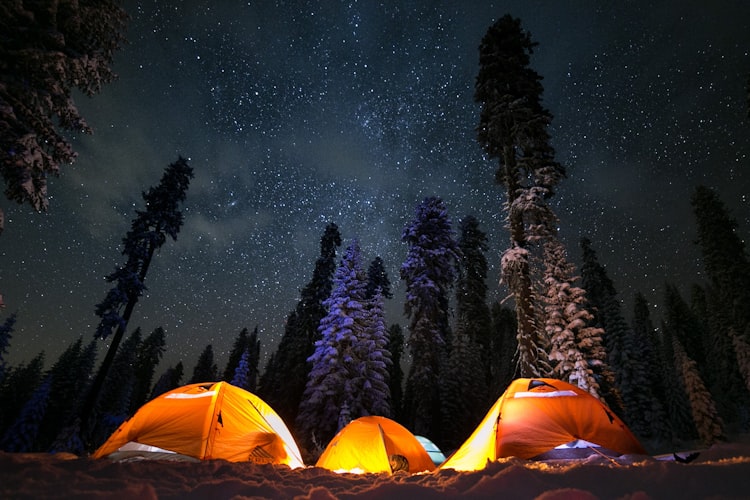Camping with family or friends is a favorite pastime for many of us. Even if the campsite itself is the main attraction or it is simply your base camp for nearby activities this article will help you find the right camping tent—your home away from home.
Here are some of the expert’s advice on how to select the best camping tents-
Tent Sleeping Capacity
When evaluating tent capacity our general advice is- Assume a close fit. If you want more room consider upsizing your tent capacity by one person, particularly if you or your tent companions:
are large people
are claustrophobic
toss and turn at night
sleep better with more than average elbow room
are bringing a small child or a dog
Tents Seasonality
4-Season Tents
Made to withstand strong winds and substantial snow loads mountaineering tents can be used in any season. Their chief function though is to stand firm in the face of seriously inhospitable weather mainly in winter or above treeline.
Key Tent Features
Peak Height
If you prefer the ability to stand up when changing clothes or enjoy the airiness of a high ceiling then search for a tent with a tall peak height.
Dome style tents provide superior strength and wind resisting abilities both of which you'll appreciate on a stormy night.
Tent Floor Length
If you’re tall (over six feet) or as additional space consider a tent with a floor-length of 90 inches.
Tent Doors
When selecting your tent think about the number of doors you need as well as their shape and orientation. If you're camping together with your family multiple doors help you avoid climbing over one another for midnight bathroom breaks.
Tent Poles
A tent's pole structure helps determine how easy or hard it is to pitch. Virtually all family tents these days are freestanding. This means they do not require stakes to set up. The advantage of this is that you can pick the tent up and move it to a different location prior to staking. Aluminum poles are durable and stronger than fiberglass.
Rainfly
A rainfly is a separate waterproof cover fitted over the roof of your tent. Use it whenever rain or dew is expected or any time you wish to retain a little extra heat.
Tent Materials
When you’re shopping remember that higher denier fabric canopies and rain flies are more rugged than lower denier ones. Also, seam tape and high denier fabrics on tent floors lessen the probability of leakage.
Ventilation
Mesh panels are often used in the ceiling, doors, and windows of tents. This allows views and enhances cross ventilation to help manage condensation. For hot, humid climates seek out larger mesh panels.
Guyout Loops
Higher-quality tents will include loops on the outside of the tent body for attaching guy lines. Guy lines allow you to batten down the hatches, no flapping fabric during high winds.
Optional Tent Accessories
Footprint
This is a custom-fitted ground cloth that goes under your tent floor. Tent floors are tough but rocks, twigs, and dirt eventually take a toll. A footprint costs far less than to replace a tent. For family tents that get a lot of in/out foot traffic, this is very useful.
Gear Loft
Tents mostly come with an integral pocket to let you keep small items off of the tent floor. A gear loft is an optional interior mesh shelf that can tuck larger volumes of gear out of the way.
Other Nice-to-Have Accessories
- Stakes and anchors for varying site conditions
- Broom and dustpan
- Inside/outside floor mat
- Tent repair kit
- Seam sealer
- Utility cord
- Battery-powered ventilation fan
Hi, I am Maria McCarthy! I am 27 years old live in Cork, Ireland. I love hiking, traveling, and outdoor activities.


Post new comment
Please Register or Login to post new comment.